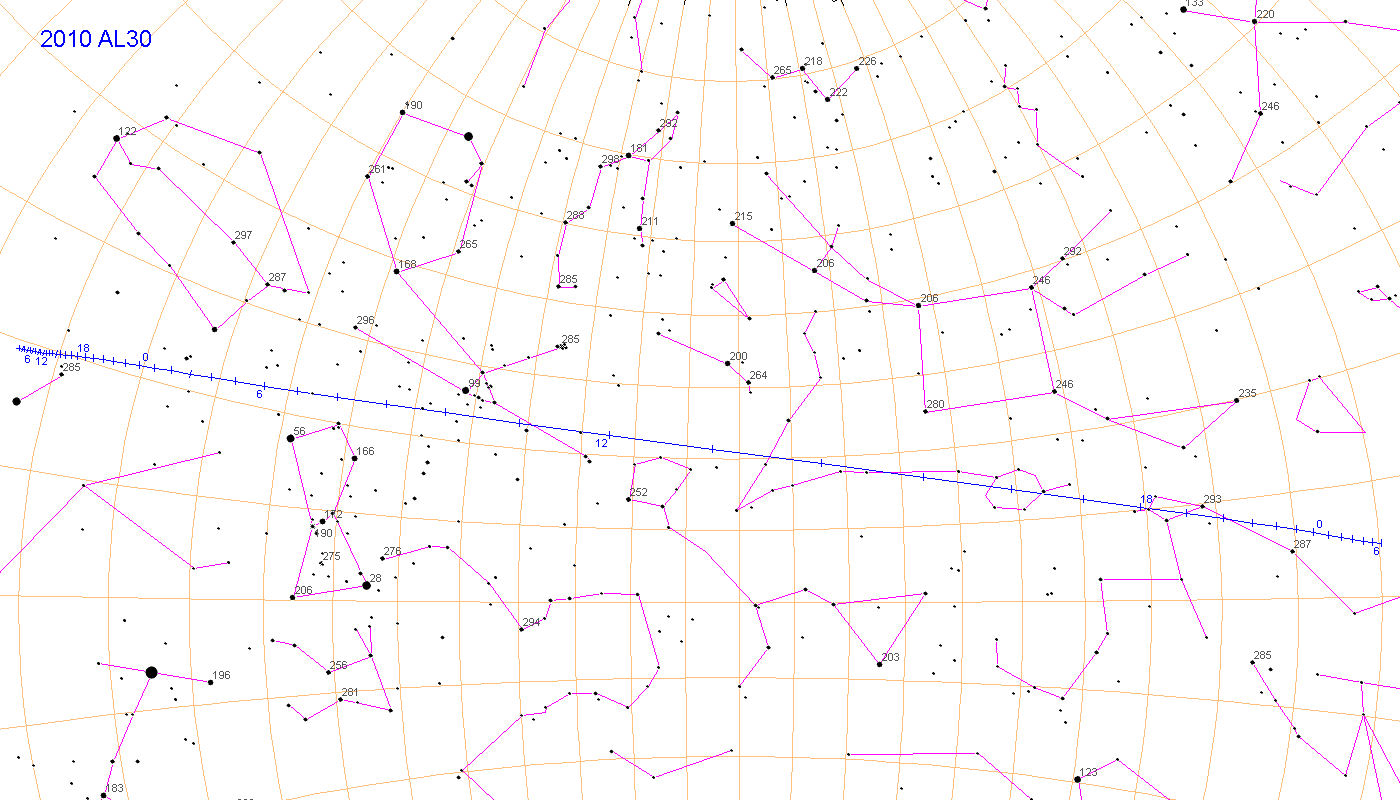Emily Lakdawalla • Jan 12, 2010
2010 AL30: Watch out for low-flying asteroids
In less than 24 hours, a newly discovered asteroid known as 2010 AL30 will be zipping past Earth at an altitude of approximately a third the Earth-Moon distance. There's no chance it'll hit us, but it's generating a lot of excitement in the community of amateur and professional near-Earth asteroid observers. People around the world are pointing telescopes at it, small and large. Even that grandest of telescopes, the Arecibo radio telescope in Puerto Rico, will be pointing at it and could determine its shape and rotation rate. There's active discussion going on through the Minor Planets Mailing List. A good place to watch for images of the asteroid is spaceweather.com.
What do we know about 2010 AL30 so far? Its orbital period is about exactly one Earth year -- common enough for Earth-crossing asteroids -- and it's relatively bright, suggesting it is a decently large space rock of approximately 10 meters in diameter. At this size, if 2010 AL30 were on an Earth impact trajectory, it would likely explode in the atmosphere, and rain rocks onto the ground, but it wouldn't create a crater. It'd boom, but wouldn't cause an air blast like the one at Tunguska. So it'd be unpleasant to be underneath it, but fatalities would have to be caused by direct hits, unlike for a big blast or a crater, where an expanding shock wave would harm everything within a certain radius. I'd warn people to stay indoors -- and then run outside to find fragments when it's over! (I based the preceding discussion on information output from the Earth Impact Effects simulator at the University of Arizona.)
I thought that this map of the predicted position of 2010 AL30 in the sky was interesting. Tick-marks are on the map at one-hour intervals. See how the tick marks are all bunched up, then spread out wide, then are all bunched up again? That's because the asteroid is coming at us from the direction almost exactly opposite to the Sun. One consequence of this approach direction is that it's actually pretty hard to refine the orbit; very tiny inaccuracies in the measured position of 2010 AL30 are magnified into large uncertainties in its eventual trajectory. This is not a serious problem for 2010 AL30 observations because what we do know about its orbit is enough to tell us that it's not going to hit us. But if this were a real potential Earth impactor, those uncertainties would translate into similar uncertainties about where exactly on the ground the asteroid would hit.

Support our core enterprises
Your support powers our mission to explore worlds, find life, and defend Earth. You make all the difference when you make a gift. Give today!
Donate

 Explore Worlds
Explore Worlds Find Life
Find Life Defend Earth
Defend Earth

